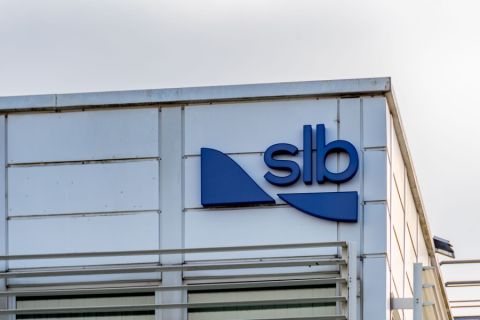In 2001, John S. Herold Inc. introduced "Synthetic ExxonMobil," expecting the group of nine energy stocks would, on balance, outperform shares of the real ExxonMobil Corp., providing investors with a competitive portfolio of energy assets. At the time, a "flight to quality" sentiment pervaded Wall Street and most energy shares were shunned in favor of large, liquid, institutional names like Microsoft, GE and ExxonMobil. (For more on the initial study, see "Synthetic ExxonMobil," Oil and Gas Investor, January 2002.) The original SXOM consisted of global energy companies TotalFinaElf, Conoco, Phillips/Tosco, Occidental, Suncor, Enterprise Oil, Penn Virginia and Hawaiian Electric. Due to consolidation, the portfolio now contains six companies: Total SA, Suncor, Occidental, Penn Virginia, ConocoPhillips and Hawaiian Electric. These energy issues were selected to provide similar worldwide energy-asset exposure while, on an individual and collective basis, they are valued at significant discounts to energy behemoth ExxonMobil. If comparable petroleum assets have comparable intrinsic value and earning power-a compelling thesis-SXOM would narrow the valuation disparity with XOM, it was believed upon conception. The theoretical SXOM stock price was determined by adding the market caps of the SXOM-member stocks and dividing this by the number of XOM shares outstanding. In the three years since SXOM's introduction, it has yielded a return of 31%, compared with 12% for shares of ExxonMobil. When dividends are included, SXOM's total return is 41%, compared with ExxonMobil's 20%. In 2001, Herold expected fundamental valuation dynamics would eventually drive asset valuations toward equilibrium. Hence, if XOM gained in value, then SXOM should appreciate further. Or, if XOM declined in value, SXOM should experience less erosion in value. From 2001 through April 2002, XOM continued to trade at a premium to SXOM. The fall of 2002-with oil prices poised for a strong performance-proved to be a defining time, as SXOM started to track the performance of the oil giant and continued to do so through the spring of 2003. As the U.S. prepared for war in Iraq and oil prices continued to firm, SXOM began to outperform XOM in April 2003 and SXOM has continued to gain in relative value in recent months. In fact, the 2003 results show that certain aspects of SXOM's performance are comparable, if not better, than those of XOM. Not only does SXOM appear to be the better value on an asset-valuation basis, it appears cheap at 4.7 times enterprise value/EBITDA (earnings before interest, taxes, depreciation and amortization), compared with XOM's ratio of 7.1. Herold reckons investors today are paying roughly $10 per barrel of oil equivalent (BOE) for XOM's proven reserves, compared with $7.65 for those of SXOM. SXOM's upstream performance metrics are also superior to XOM. Despite SXOM's strong relative market performance, Herold believes a significant valuation differential remains and the SXOM portfolio should continue to outperform. The firm suggests selling shares of XOM and buying-or continuing to hold onto-the shares of SXOM. Certainly, a falling oil price is just one of the downside risks-that would make more leveraged issues such as SXOM less attractive. ExxonMobil's debt/cash flow is only 0.3, compared with a median of 1.3 for the synthetic version. Still Synthetic ExxonMobil's creditworthiness is impressive if not up to ExxonMobil's "Fort Knox" status. The firm concedes that, in many respects, XOM deserves to trade at a premium to its generic counterpart. ExxonMobil's size, liquidity and solid track record of value creation do represent important strengths to investors. No doubt, ExxonMobil has a slate of outstanding tangible and intangible assets that remain virtually impossible to replicate. Its "trophy assets" do justify some valuation premium. The giant oil also has a high degree of integration between its vast asset and employee base. And, it has a streamlined corporate structure that focuses on performance-based compensation-all of which have translated into operating efficiencies. Another key benefit offered to XOM shareholders is the exceptional liquidity in the stock market that allows institutional investors to purchase and sell immense positions of shares with relative ease. -Art Smith, Aliza Fan and Lysle Brinker, John S. Herold Inc.
Recommended Reading
Artificial Lift Meets Artificial Intelligence, with Hit and Miss Results
2024-08-23 - Oxy and Chevron are among companies trying to find the sweet spot between data analytics and machine learning with human intervention to optimize production and predict failures before they happen.
ZEMA Global to Acquire Morningstar’s Commodity Data Business
2024-09-23 - ZEMA Global Data Corp. is acquiring Morningstar Commodity Data to meet demand for data and analytics prompted by the global energy transition.
PakEnergy Plows Ahead with New SCADA Solution
2024-09-17 - After acquiring Plow Technologies, home of the OnPing SCADA platform, PakEnergy looks to enhance its remote monitoring solutions.
SLB Launches New GenAI Platform Lumi
2024-09-17 - Lumi’s machine learning capabilities will be used to enhance SLB’s Delfi digital platform offering for better automation and operational efficiencies.
SLB, Palo Alto Networks to Expand Cybersecurity Collaboration
2024-08-19 - The collaboration looks to strengthen cybersecurity across the energy sector, providing comprehensive security across various platforms.
Comments
Add new comment
This conversation is moderated according to Hart Energy community rules. Please read the rules before joining the discussion. If you’re experiencing any technical problems, please contact our customer care team.





